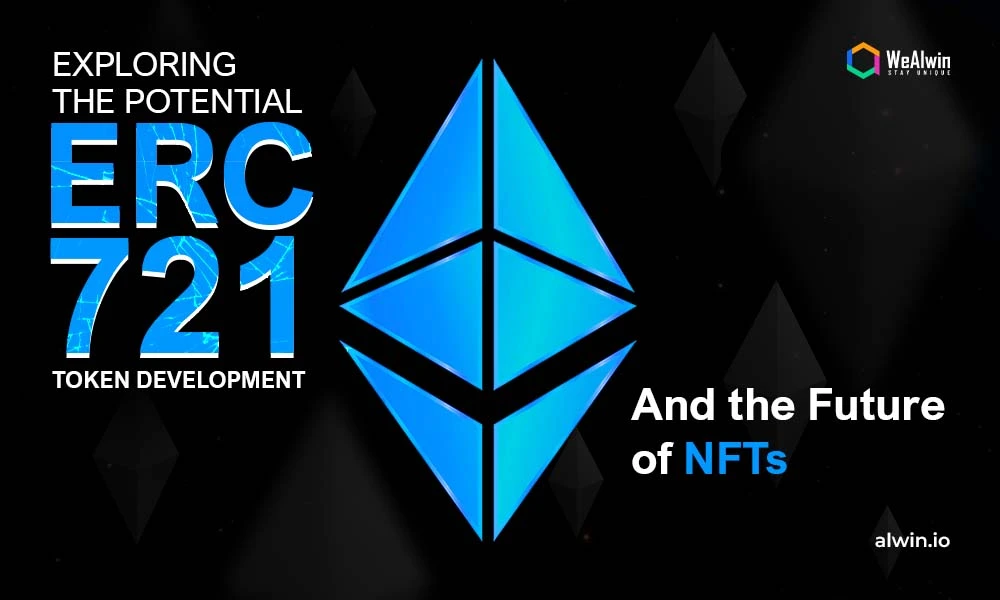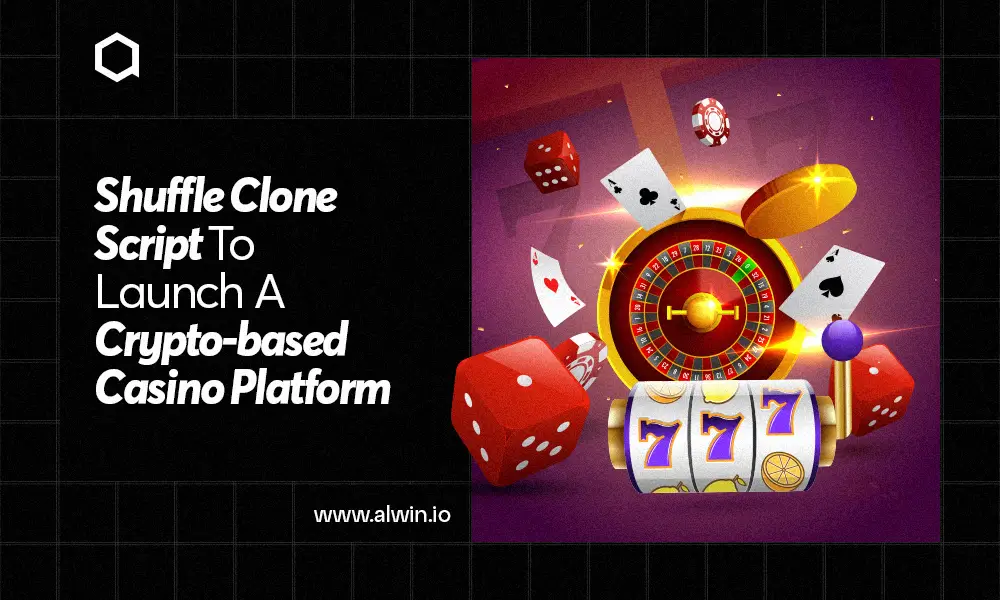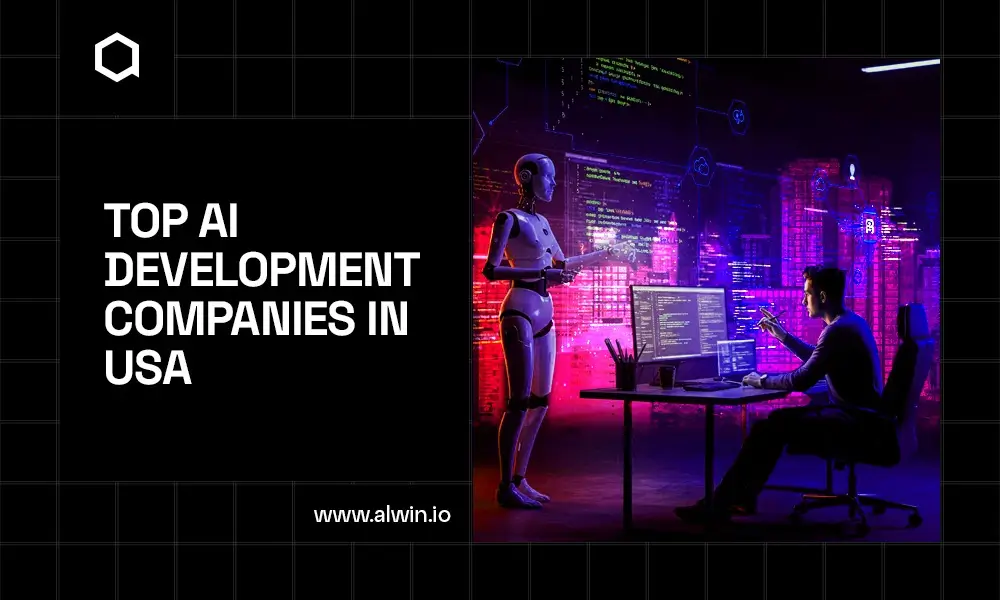Imagine owning a digital asset that is truly unique—this is the promise of ERC721 tokens. Unlike interchangeable ERC20 tokens, each ERC721 token is distinct, ensuring that digital assets like art, collectibles, and virtual real estate have their own identity on the Ethereum blockchain.
Importance and Relevance in the Current Market
In today’s booming digital economy, the need for secure and unique digital ownership is critical. The NFT market reached an astonishing $40 billion in 2023 and is projected to grow to $100 billion by 2026. This explosive growth highlights the immense demand for reliable digital asset management solutions. ERC721 tokens address key pain points like authenticity and fraud prevention, offering a robust framework for managing these digital assets.
By embracing ERC721 token development, businesses can enhance user engagement, create new revenue streams, and stay ahead in a competitive market. In this guide, we’ll explore the world of ERC721 tokens, covering their features, benefits, and real-world applications, providing you with the insights needed to leverage this technology effectively.
What is an ERC721 Token?
Definition and Explanation of ERC721
An ERC721 token is a standard for creating non-fungible tokens (NFTs) on the Ethereum blockchain. Each ERC721 token is unique and cannot be exchanged on a one-to-one basis with another ERC721 token, making them ideal for representing digital assets like art, collectibles, and real estate.
Comparison with ERC20 and Other Token Standards
Unlike ERC20 tokens, which are fungible and identical, ERC721 tokens are non-fungible and distinct. ERC20 tokens are used for cryptocurrencies and utility tokens, where each unit is interchangeable. In contrast, ERC721 tokens provide a way to create verifiable digital ownership of unique items.

Key Features of ERC721 Tokens
Unique Properties
ERC721 tokens are distinguished by their non-fungible nature, meaning each token is unique and has its value. Here are some key features:
Indivisibility: Unlike ERC20 tokens, which can be divided into smaller units, ERC721 tokens are indivisible. Each token represents a whole, unique asset.
Distinct Identity: Every ERC721 token has a unique identifier, ensuring that no two tokens are the same. This feature is crucial for representing digital assets like collectibles or virtual real estate.
Metadata Integration: ERC721 tokens can include metadata, such as descriptions, images, and other attributes, embedded directly in the token. This allows for rich, detailed representations of digital assets.
Importance in Blockchain Development
ERC721 tokens play a significant role in blockchain development by addressing several key needs:
Authenticity and Provenance: The unique nature of ERC721 tokens ensures that each asset's ownership and history are verifiable and tamper-proof. This is vital for digital art, collectibles, and other unique items.
Decentralized Ownership: ERC721 tokens are managed on the Ethereum blockchain, providing a decentralized system for ownership and transfer. This eliminates the need for intermediaries and reduces the risk of fraud.
Interoperability: ERC721 tokens are designed to be compatible across different platforms and applications within the Ethereum ecosystem. This interoperability enhances their utility and integration potential.
How Does the ERC721 Standard Work?
The ERC721 standard’s core functions are crucial for the effective development and management of unique digital assets. By supporting the creation, transfer, and management of non-fungible tokens, ERC721 tokens provide a reliable framework for applications that require individual asset identification and ownership. This functionality is fundamental to various use cases, from digital art and collectibles to virtual real estate and gaming items.
Core Functions of ERC721 Tokens
ERC721 tokens come with several core functions that enable their unique features and capabilities:
balanceOf: This function returns the number of ERC721 tokens owned by a specific address. It helps in tracking the quantity of unique assets an address holds.
ownerOf: This function provides the address of the current owner of a specific token. It is essential to verify who holds a particular token.
safeTransferFrom (without data): This function transfers the ownership of a token from one address to another while ensuring that the recipient's address is capable of handling the token safely.
transferFrom: This function allows the transfer of token ownership from one address to another but without additional safety checks.
approve: This function authorizes a specific address to manage a token on behalf of its owner. It is useful for delegating control of a token.
getApproved: This function returns the address currently authorized to manage a specific token, helping to verify permissions.
setApprovalForAll: This function enables or disables an operator to manage all tokens owned by the caller, providing a way to manage multiple tokens efficiently.
isApprovedForAll: This function checks if an operator is approved to manage all tokens owned by the caller, ensuring that permissions are correctly set.
Benefits of ERC721 Tokens for NFTs
Key Advantages of ERC721 Token Development
Enhanced Security: The ERC721 standard operates on the Ethereum blockchain, offering a decentralized ledger that secures ownership records. This reduces the risk of fraud and ensures that ownership is transparent and immutable.
Rich Metadata: ERC721 tokens can store rich metadata, including detailed descriptions, images, and attributes. This allows for a richer representation of digital assets and provides valuable context for collectors and users.
Market Demand and Value: The unique nature of ERC721 tokens supports market demand for rare and exclusive digital items. This rarity can drive higher value and interest in collectibles and digital art.
Efficient Transactions: ERC721 tokens streamline transactions by leveraging smart contracts. These automated contracts reduce the need for intermediaries, making transactions faster and more cost-effective.
Interoperable Ecosystem: The ERC721 standard ensures that tokens can interact with various platforms and services within the Ethereum network. This interoperability enhances their utility and accessibility across different applications.
Creative Flexibility: Developers and artists can use ERC721 tokens to create innovative and interactive digital experiences. This flexibility supports diverse use cases, from gaming assets to virtual real estate.
Unlocking the Potential of ERC721 Tokens
ERC721 tokens are not just theoretical concepts; they have practical applications that are transforming various industries. By offering a framework for unique digital ownership, ERC721 tokens enable innovative uses in multiple sectors. Here’s how they’re making an impact:
Use Cases of ERC721 Tokens
Digital Art and Collectibles ERC721 tokens are widely used to create and trade digital art and collectibles. Each token represents a unique piece of art or collectible item, ensuring authenticity and scarcity. This has opened new avenues for artists and collectors to engage in the digital art market.
Gaming In the gaming industry, ERC721 tokens are used to represent in-game assets such as characters, skins, and weapons. These tokens allow players to truly own and trade their in-game items, adding value and permanence to their gaming experience.
Virtual Real Estate ERC721 tokens facilitate the buying, selling, and trading of virtual real estate in digital worlds and metaverses. Each token represents a unique parcel of virtual land, enabling users to invest in and develop virtual properties.
Event Tickets Using ERC721 tokens for event tickets ensures that each ticket is unique and can be easily verified. This helps prevent fraud and scalping while providing a secure method for managing event access.
Identity and Certification ERC721 tokens can be employed to issue and verify digital identities and certifications. This application provides a secure and verifiable way to manage credentials and personal information.
Domain Names ERC721 tokens are used to represent and manage blockchain-based domain names. Each token corresponds to a unique domain, making it possible to buy, sell, and trade digital real estate on the blockchain.
How to Create ERC721 Tokens
A Step-by-Step Guide to ERC721 Token Development
Creating and deploying ERC721 tokens involves several key steps. This guide will walk you through the process, ensuring you understand each phase from planning to deployment.
Step 1: Planning Your ERC721 Token
Begin by defining the purpose and features of your ERC721 token. Consider what type of digital asset you are representing and how it will be used. Clear planning will help ensure that your token meets your needs and objectives.
Step 2: Setting Up the Development Environment
Set up your development environment by installing the necessary tools and frameworks. You'll need an Ethereum development framework like Truffle or Hardhat, a Solidity compiler, and access to an Ethereum test network.
Step 3: Writing the Smart Contract
Write the smart contract for your ERC721 token using Solidity. This contract will define the token’s unique properties and functionalities, such as metadata and ownership details. Ensure that your code adheres to the ERC721 standard.
Step 4: Compiling and Deploying the Smart Contract
Compile the smart contract to check for errors and ensure it is ready for deployment. Once compiled, deploy the contract to an Ethereum test network for initial testing. After successful testing, deploy the contract to the Ethereum mainnet.
Step 5: Testing and Debugging
Thoroughly test your ERC721 token on the test network. Check for any issues or bugs and debug them as necessary. Testing is crucial to ensure that your token functions correctly and securely before going live.
Step 6: Front-End Integration
Integrate your ERC721 token with a user-friendly front-end interface. This will allow users to interact with your token easily, whether it's for minting new tokens, transferring ownership, or viewing token details.
Step 7: Security Considerations
Conduct a security audit of your smart contract to identify and address potential vulnerabilities. Security is critical in blockchain development to prevent exploits and ensure the integrity of your token.
Step 8: Deployment and Maintenance
After a successful audit and integration, deploy your ERC721 token on the Ethereum mainnet. Ongoing maintenance is essential to address any issues that arise and to update the token as needed.
Real-World Examples of ERC721 Projects
ERC721 tokens have proven their value across various industries by powering some of the most innovative and successful digital projects. These real-world examples highlight the versatility and impact of ERC721 tokens, demonstrating their potential in different applications from virtual worlds to digital collectibles.
Notable ERC721 Projects
1. Decentraland
Overview: A decentralized virtual world where users can buy, develop, and trade virtual land and assets.
Impact: Uses ERC721 tokens to represent ownership of virtual real estate and in-game items, creating a dynamic digital economy.
2. CryptoPunks
Overview: One of the earliest and most iconic NFT projects, featuring 10,000 unique pixelated characters.
Impact: Demonstrates the ERC721 token's ability to create unique, collectible digital art with significant value.
3. NBA Top Shot
Overview: A platform for buying, selling, and trading officially licensed NBA collectible highlights.
Impact: Uses ERC721 tokens to represent digital moments from NBA games, integrating sports and NFTs.
4. The Sandbox
Overview: A virtual world where users can create, own, and monetize their gaming experiences.
Impact: ERC721 tokens are used for virtual land and assets, empowering user-generated content and virtual economies.
5. Bored Ape Yacht Club
Overview: A collection of 10,000 unique Bored Ape NFTs that also function as membership cards for an exclusive community.
Impact: Highlights how ERC721 tokens can offer both digital art and real-world benefits like community access.
6. Doodles
Overview: A collection of colorful, hand-drawn characters offering a unique art style and community engagement.
Impact: Demonstrates the appeal of ERC721 tokens in creating and trading distinct, collectible digital art.
7. CryptoKitties
Overview: A game where users can breed, collect, and trade virtual cats.
Impact: One of the first projects to use ERC721 tokens for digital collectibles, showing the potential for gaming and NFTs.
8. Axie Infinity
Overview: A blockchain-based game where players collect, breed, and battle fantasy creatures called Axies.
Impact: Uses ERC721 tokens to represent unique Axies, creating a play-to-earn ecosystem with real value.
9. Nike’s RTFKT
Overview: A brand known for its digital sneakers and fashion items, integrating physical and digital assets.
Impact: Combines ERC721 tokens with real-world fashion, showcasing the potential for crossover between digital and physical goods.
10. Gods Unchained
Overview: A trading card game where players use ERC721 tokens to represent unique cards.
Impact: Demonstrates the use of ERC721 tokens in gaming for trading and collecting digital assets.
Challenges in ERC721 Token Development
Common Obstacles
Complex Smart Contracts: ERC721 contracts can be intricate, leading to potential errors and vulnerabilities.
Scalability Issues: High transaction volumes can result in increased gas fees and slower processing times.
Interoperability Problems: Ensuring compatibility across platforms can be challenging.
Development Costs: Creating and deploying ERC721 tokens can be expensive.
Regulatory Compliance: Navigating legal requirements can be complex and costly.
Best Practices
Thorough Testing: Implement extensive testing to identify and fix issues early.
Optimize for Gas Efficiency: Use cost-effective coding practices to manage transaction costs.
Adhere to Standards: Follow interoperability standards to enhance compatibility.
Budget Wisely: Plan and manage development costs effectively.
Seek Legal Advice: Ensure compliance with regulations to avoid legal issues.
Security in ERC721 Token Development
Importance of Security
Vulnerability Risks: Smart contracts are prone to bugs and exploits.
Attack Protection: Tokens must be safeguarded against hacking and unauthorized access.
Data Integrity: Ensuring accurate and secure transaction data is crucial.
Strategies for Enhanced Security
Conduct Audits: Regularly audit smart contracts to detect and fix vulnerabilities.
Implement Best Practices: Use established security protocols and best practices.
Stay Updated: Keep abreast of the latest security threats and solutions.
Cost of Developing ERC721 Tokens
Understanding the Investment in ERC721 Token Development
Developing ERC721 tokens involves several costs that vary based on factors such as complexity, development expertise, and additional features. Knowing these costs helps in budgeting and planning for a successful project. Here’s a breakdown of the main cost factors associated with ERC721 token development.
Key Cost Factors
Complexity of Smart Contract The complexity of your ERC721 token's smart contract impacts development costs. Simple contracts are less expensive to develop, while more complex ones with advanced features or custom functionalities will cost more.
Development Expertise Hiring experienced developers can be a significant cost. Highly skilled developers are needed to ensure that your ERC721 token is secure, efficient, and adheres to best practices. Rates may vary based on expertise and location.
Deployment Platform The choice between testnet and mainnet deployment affects costs. Deploying on the Ethereum mainnet involves gas fees and other costs, while testnet deployment is generally less expensive but used for testing purposes only.
Security Audits Conducting security audits is essential to identify and fix vulnerabilities in your smart contract. Audit costs can vary based on the audit firm's reputation and the complexity of your contract.
Additional Features Incorporating additional features like custom metadata, advanced functionalities, or integration with external systems can increase development costs. Assess your needs and budget accordingly for these enhancements.
Maintenance and Updates Post-deployment maintenance and updates are ongoing costs. Ensuring that your ERC721 token remains functional and secure requires regular updates and possible bug fixes.
Future Trends in ERC721 Token Development
Navigating the Evolving Landscape of ERC721 Tokens
The world of ERC721 tokens is rapidly evolving, with new trends and advancements shaping the future of digital assets. Understanding these trends can help you stay ahead in the NFT space and make informed decisions for your projects. Here’s a look at the key trends and future directions for ERC721 token development.
Integration with Metaverse Platforms As metaverse platforms grow, ERC721 tokens are increasingly being used to represent virtual real estate, digital goods, and avatars. This integration is expected to expand, providing new opportunities for virtual economies and interactions.
Integration of AI and Machine Learning The integration of artificial intelligence (AI) and machine learning is expected to enhance the functionality of ERC721 tokens. These technologies could be used to automate and personalize various aspects of NFT management and interaction.
Advanced Metadata Capabilities The evolution of ERC721 tokens includes advancements in metadata capabilities. Future tokens may support more complex metadata structures, including multimedia and dynamic content, enhancing the richness and functionality of NFTs.
Regulatory Developments As the NFT market matures, regulatory frameworks are evolving to address legal and compliance issues related to ERC721 tokens. Staying informed about these regulations will be crucial for ensuring compliance and avoiding legal challenges.
Increased Focus on Sustainability With growing concerns about the environmental impact of blockchain technologies, there is an increasing focus on sustainable practices in ERC721 token development. This includes exploring energy-efficient consensus mechanisms and reducing the carbon footprint of blockchain operations.
Conclusion: Embracing the Future of ERC721 Token Development
Summarizing the Essentials of ERC721 Tokens
ERC721 tokens are revolutionizing digital assets with unique ownership and versatile applications. Understanding their development is crucial for innovation in NFTs, covering areas from digital art to virtual real estate. Stay ahead by recognizing cost factors and future trends like metaverse integration and sustainability.
Ready to dive deeper into ERC721 token development or explore how it can benefit your projects? Contact WeAlwin Technologies, a leading Ethereum Token Development Company, for expert guidance and tailored solutions that will help you succeed in the dynamic world of NFTs.



